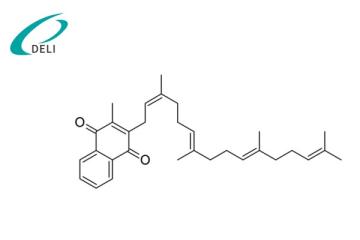
Menatetrenone is gaining increasing attention for those concerned about bone and cardiovascular health. A natural question arises: Can we get the necessary menatetrenone through our daily diet? This directly impacts the need for supplementation, and therefore warrants further investigation.
Menatetrenone is primarily found in certain fermented foods. The most prominent and high-content source is natto, a traditional Japanese food made from soybeans fermented with the bacterium natto. Even a small portion of natto can contain significant amounts of menatetrenone. Small amounts of menatetrenone are also found in certain types of cheese, animal liver, egg yolks, and some animal-derived foods, such as chicken thighs and breasts. However, with the exception of natto, a common food in parts of East Asia, the levels of menatetrenone in other foods are generally relatively low. Furthermore, these foods may not be consistently and abundantly available in the average person's daily diet, either in terms of variety or intake.

Modern dietary habits and regional variations make obtaining sufficient menatetrenone through dietary intake challenging. First, natto's distinctive flavor and sticky texture make it a non-dairy part of the diet for many people outside of East Asia, particularly those in Europe and the United States, making it less accessible. Second, even in East Asia, the fast-paced pace of modern life makes it difficult for everyone to consume natto consistently on a daily basis. Furthermore, relying on liver, egg yolks, or certain cheeses for natto intake is subject to restrictions related to cholesterol intake, calorie control, or dietary preferences. Common meats, vegetables, fruits, and grains contain little or no menatetrenone. This means that for most people who don't regularly consume natto, it's difficult to consistently obtain an effective daily dose of menatetrenone through a regular diet alone.
Research has shown that menatetrenone plays a key role in activating osteocalcin and matrix Gla protein. The former promotes calcium deposition in bones, increasing bone density, while the latter inhibits abnormal calcium deposition in soft tissues such as blood vessel walls. The amount required to achieve these physiological effects is not negligible. However, extensive dietary surveys of the general population reveal that many people's total vitamin K2 intake falls below the range recommended by nutritionists for optimal bone and cardiovascular support. Adequate intake of menatetrenone (MK-4) is particularly challenging through regular dietary patterns.
Menatetrenone requirements are often higher for middle-aged and elderly individuals, postmenopausal women, those at risk for osteoporosis, and those at increased risk for cardiovascular disease. This is because bone loss accelerates with aging, increasing the challenges of maintaining vascular health, and the body's ability to absorb and utilize nutrients may also decline. For these individuals who require higher "doses" of vitamin K2 to support health, it is nearly impossible to meet their increased physiological needs solely through limited sources in the daily diet.
| Special Population Needs | Reason |
|---|---|
| Middle Aged Elderly | Accelerated bone loss reduced nutrient absorption |
| Postmenopausal Women | Increased osteoporosis risk |
| Cardiovascular Risk | Higher vascular health demands |